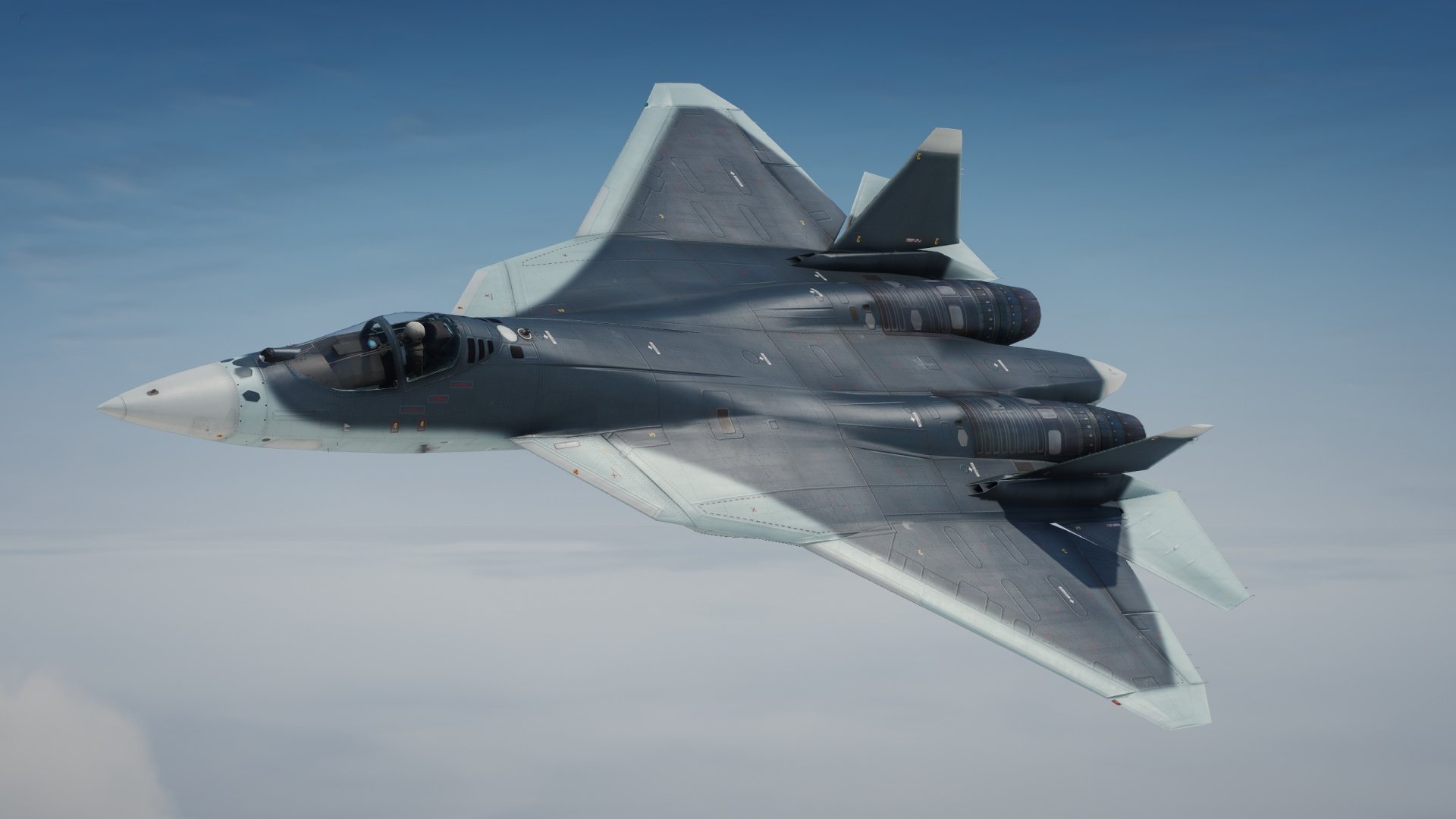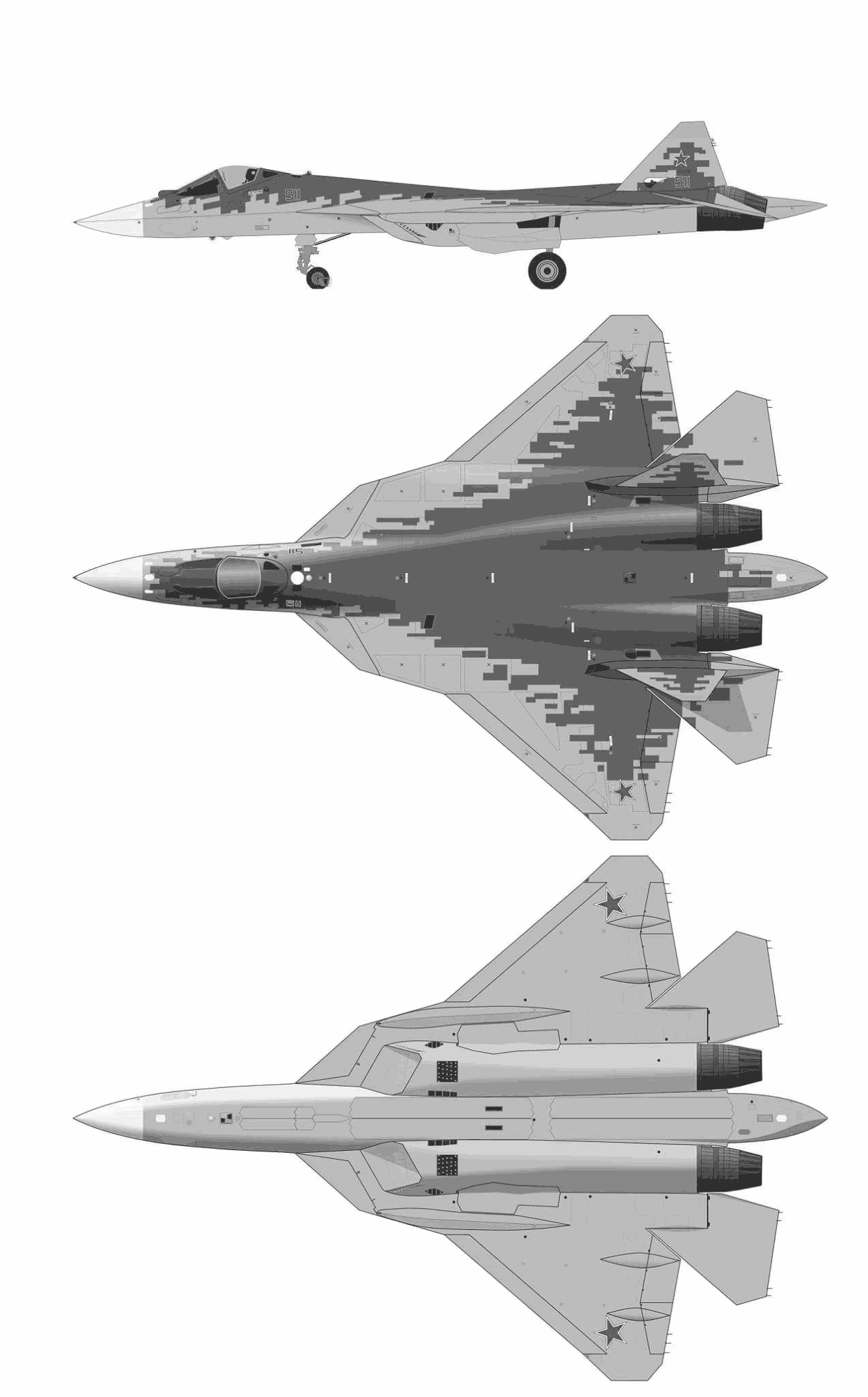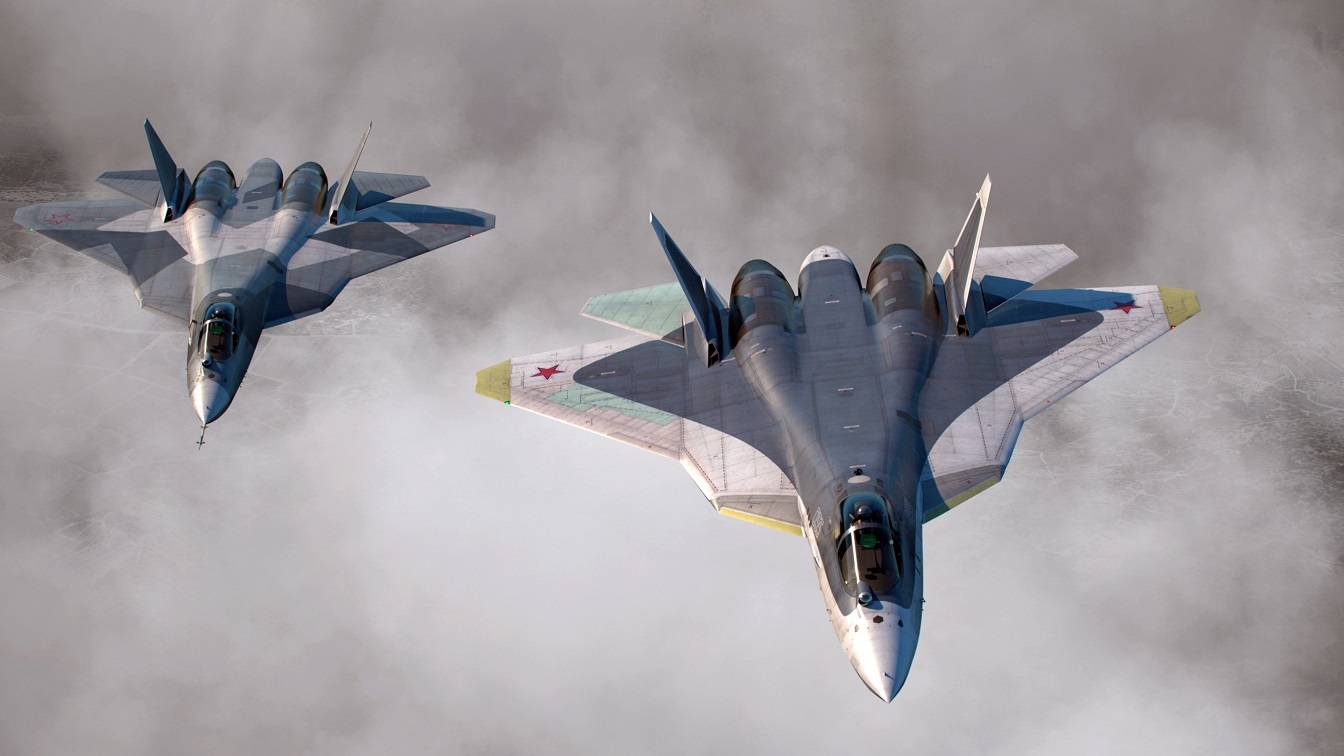Su 57 Jet - Russian Sukhoi Su-57 fighter jets perform during an air show at the MAKS-2019 air show in Zhukovsky, outside Moscow, on August 29, 2019.
The Su-57 has been under development since 2002 and is considered an important part of Russia's arms export industry as a fifth-generation fighter, competing with rival systems such as America's F-35. The aircraft made its first flight nearly ten years ago, yet the most popular system has yet to enter Russia's war with any foreign armed forces, despite Russian promises to the contrary. Several test flights of the aircraft have been made recently, including the delivery of some prototypes to Syria in 2018 and 2019. The jets apparently did not carry out direct firing or strike operations, while the Kremlin said otherwise without providing evidence. . In addition, development challenges and recent accidents continue to delay the initial operational capability (IOC) of the advanced fighter until the mid-2020s at the earliest. The head of Sukhoi Aviation, which develops the Su-57, resigned earlier this year amid development delays, including the December 2019 crash of the first "working" Su-57 during a test flight.
Su 57 Jet

The organization, a non-profit research organization, collected and analyzed open source information about Russian arms sales around the world at the request of the U.S. government. to support training and awareness with foreign aid. Another recurring finding of the analysis is the number of challenges and obstacles facing the Russian Su-57, making it unlikely that Russia will export the aircraft before the 2020s.
Russia's Fifth Gen, Su 57 Stealth Fighter Jets To Test Hypersonic Weapons: Military Sources
The biggest challenge is the development of the second generation engine for this aircraft. Although designed to house the second generation Izdeliye 30 engine, current prototypes are fitted with the older engine. According to a Sukhoi aircraft engineer turned independent aviation expert, the 76 "operational" models expected to be delivered to the Russian Federation Air Force in 2020 will not have the planned second-generation engine. It is not yet clear when the second generation engine will be completed. In addition to the improved engine, the Su-57 is said to have an all-azimuth, or 360-degree, radar capability similar to the F-35. After all, it's not just the ground characteristics (LO) that make the bomb of the fifth generation, but the improved suite of all azimuth sensors. Currently, only the F-35 has both of these features and is in mass production.
The successful development of these advanced airframes is and will continue to be a major challenge for Russia's A&D industries. The A&D industries of the Russian Federation are a legacy of failed attempts to reap all the fruits of the post-Cold War revolution in information technology. This was exacerbated by Western sanctions and the isolation of the Russian and Ukrainian A&D industries in this regard. Since the Crimea crisis that began in the winter of 2014, Russia's political and military leadership has talked about reforming and reforming Russia's A&D sector, but the results have been largely negative.
Most of the problems stem from the way the Russian A&D sector is financed. Large conglomerates must borrow from the Russian banking sector to finance the development of the next generation of high-tech combat vehicles, such as the Su-57 fighter jet. These organizations have repeatedly found themselves in debt to Russian banks after major weapons development programs ran into trouble. From time to time, Putin's regime has had to "liberate" these industries, especially since overall defense spending is tied to revenues from oil and natural gas. This revenue stream was reduced in 2015 during the market share war initiated by Saudi Arabia by introducing North American factories. The sustainability of this period of austerity in defense spending has been severely hampered by the recent downturn in the Russian economy, which has been damaged by the drop in oil and gas prices caused by the global economic slowdown caused by the COVID-19 pandemic.
It is no wonder that the Russian government has endured a strong push to sell the current generation of combat vehicles and has received financial support for various joint weapons development projects. The joint marketing and development of the Su-57 has been the poster child for this situation. India is a country that has expressed interest in purchasing this aircraft and had completed a joint development program with Russia in 2007. However, in 2018, India withdrew from the program due to continued delays in development, particularly the development of the second generation engine, and disagreements over technology transfer.
Su 57 Stealth Fighter Allegedly Being Used In Combat In Ukraine
While Russia continues to blame India, the Modi government has announced plans to build its own fifth-generation fighter jet, indicating that it has no plans to buy the Su-57. India has revealed that it plans to design its engines with French, British and American models, as Russia is lagging behind in engine technology. This does not mean that the Indian market for modern armored fighting vehicles has dried up for the Russians. Recently, the Russians were able to sell a small number of Su-30 MKIs and MiG-29s to India due to the violent border disputes between India and China over the summer.
Russia continued to look for other markets for the Su-57 or cooperation partners. These include China, Turkey, Vietnam and Algeria. So far, these changes have not been successful. In December 2019, there were various reports indicating that Algeria had signed a contract for 12 Su-57 aircraft, which would make Algeria its first export customer. Several sources have expressed doubts about whether the deal will happen. One reason is that given how late the delivery of the Su-57 is to the Russian military, Russia will likely struggle to meet Algeria's 2025 deadline. Another reason is that Algerian law requires military aircraft from foreign countries to first be tested in the country, which the Russians will not allow, according to Tom Cooper, an expert on Russian military aircraft.
Despite Russia's ongoing efforts to commercialize the aircraft, it is unlikely that a fully developed and fully production-ready Su-57 will be available for sale before the end of the 2020s. Even a fully developed Su-57 will probably have the qualities of another fourth generation heavy bomber, the F-15EX, which lacks the LO features of the F-35, but has all the azimuth acquisition capabilities of a fifth generation fighter. . the plane.

Ryan Bauer is a defense analyst and Peter Wilson is a senior international defense researcher at a non-profit, non-partisan organization.
Russia Offers India Its Su 57 Stealth Fighter (again)
Commentaries give researchers a platform to provide insights based on their professional knowledge and often on their own peer-reviewed research and analysis. It is a product of PAK FA (Russian: ПАК ФА, abbreviation: Перспективный авиационпней). Program Aviatsionnyy Kompleks Frontovoy Aviatsii, burning. "Prospective Front Air Force Aeronautical Complex"), introduced in 1999 as a modern and cost-effective MFI (Mikoyan Project 1.44/1.42). The internal name of the Sukhoi aircraft is T-50. The Su-57 is the first aircraft in service with the Russian military developed using stealth technology and is intended to be the cornerstone of a family of stealth fighter jets.
A multi-role fighter capable of air combat as well as land and sea strikes, the Su-57 combines stealth, super maneuverability, super cruise, integrated avionics and significant internal payloads.
The aircraft is expected to replace the MiG-29 and Su-27 in Russian military service, and be sold for export. The first prototype aircraft flew in 2010, but the program will have a long development due to various structural and technical problems that arose during testing, including the destruction of the first production aircraft in an accident before its delivery. After several delays, the first Su-57 entered service with the Russian Aerospace Forces (VKS).
In 1979, the Soviet Union expressed the need for the next generation of fighter jets to be operational in the 1990s. The program became the I-90 (Russian: И-90, short for: Истребитель 1990–х годов, lit. 'fighter of the 90s') and called for the fighter to be "multi-purpose" (i.e. multi-purpose) as it has a significant area. The attack force will also effectively replace the MiG-29 and Su-27 in front-line tactical aviation service. Two subsequent designs were developed to meet these requirements: the MFI (Russian: МФИ, abbreviated: Многофункциональный фронтовой истребитель, lit. 'Multifunctional Frontline Fighter) and the smaller L.,йЛй:FIй: '), with concept work beginning in 1983.
Hd Su 57 Wallpapers
Although not a member of the MFI, Sukhoi began its program in 1983 to develop next-generation fighter technology, leading to the advanced test wing of the S-32 aircraft, which later became the S-37 and Su-47. Due to lack of funds after the collapse of the Soviet Union, MFI was repeatedly delayed, and the first flight of the MiG 1.44 / 1.42 prototype did not take place until 2000, nine years behind schedule.
Due to high costs, the MFI and LFI were effectively canceled while the Russian Ministry of Defense began work on a new next-generation fighter system; In 1999, the minister proposed the PAK FA or I-21 program, announcing the tender in April 2001.
Because

Sig p365 tulster holster, sig p365 iwb holster, sig holsters p365, sig p365 sas holster, sig p365 xl holster, sig p365 hybrid holster, appendix holster sig p365, safariland holster sig p365, sig p365 belt holster, sig p365 holster, sig p365 purse holster, sig sauer p365 holster
0 Comments